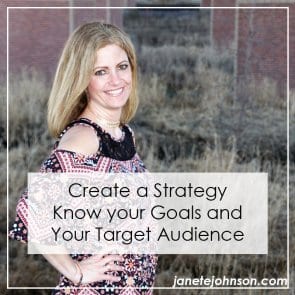Create a Strategy – Know your Goals and Your Target Audience

You may know that defining a target audience is a best business practice. But, defining a target audience is a best practice for anyone that is looking to give others something. It might be a salary, investment, or money in exchange for a product or service. Whenever you need something from someone, you go through some of the steps in defining your target audience.
We even go through the target audience process at an early age. Think back to when you were a kid when you wanted a treat or a toy, you went through the target audience process. You knew that your dad probably wouldn’t be the one to approve your request, so you went to ask your mom and you had to make sure to catch her in the right mood.
This is an example of your target audience. Businesses need to take the time, energy and invest money to find their specific target audience to ensure their marketing plan is effective.
Companies cannot try to please everyone, so try to find the perfect niche for your business. This will help you better strategize your company’s social efforts that match your customer’s behaviors.
Step 1: Identify Your Audience
You more than likely have a specific target audience in mind, the question is whether or not your content is currently attracting that target audience. [clickToTweet tweet=”You can learn more about your audience through Google Analytics, Facebook Insights and listening!” quote=”You can learn more about your audience through Google Analytics, Facebook Insights and plain old listening!”]
Step 2: Understand How Your Audience Currently Engages
Now that you’ve identified your audience, the next step is to look at how your audience engages with your site. Are they responsive, converting, purchasing? Pay close attention. A great way to test this is with Facebook ads. Create different niche audiences and test. Learn about your audience. Is who you thought was your target audience engaging with your content? Have you tested ones that could be your audience, yet you think they might not be? It is worth testing and learning.
Step 3: Create Engaging Content
Now it’s time to take what was taught in Steps 1 and 2 and put them all into action. Create and test content that will resonate with your audience.
Step 4: Measure, Optimize, Repeat
Now that you’ve got a good idea of who your customer is and how to create content that converts, it’s time to monitor analytics on your website or social media platforms on a consistent basis. Set a schedule and commit to it. Look at your stats weekly or monthly, but be sure to review, optimize and delete what isn’t working and repeat what is working.






